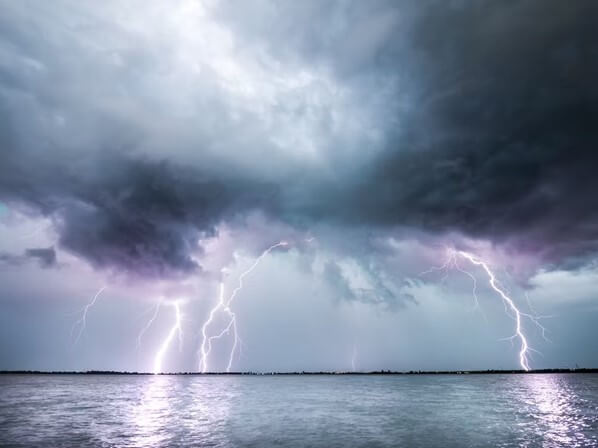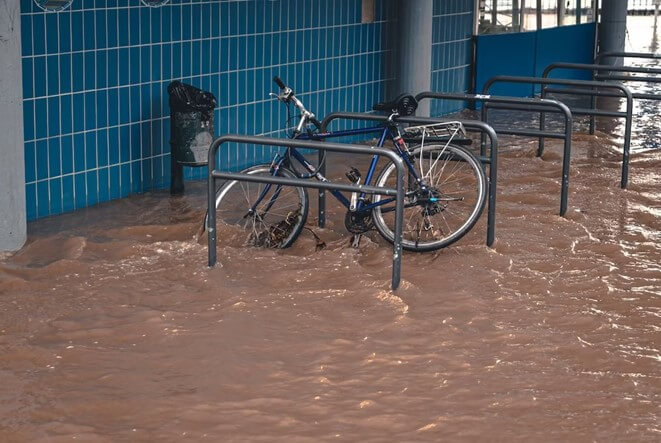Researchers suggest that climate change probably influences rainfall and flooding, although pinpointing the exact nature of this connection can pose challenges.
It is widely acknowledged that climate change can lead to more intense and frequent extreme weather events, such as hurricanes and heavy rainfall.
Intense rainfall events have been hitting different regions of the world for the last two weeks, with the latest being the devastating floods in Libya, which may have killed as many as 10,000 people.

In a series of recent weather events, various regions across the globe have been hit by severe rain and flooding. Prior to the devastating Mediterranean storm named Daniel, which wreaked havoc in eastern Libya, several areas experienced heavy rainfall and subsequent inundation. Central Greece, northwestern Turkey, southern Brazil, central and coastal Spain, southern China, Hong Kong, and the southwestern United States were among the affected regions.
Andrew Hoell, a research meteorologist at the National Oceanic and Atmospheric Administration’s Physical Sciences Laboratory, noted that it’s unusual to witness so many unrelated extreme weather events occurring worldwide in such a short period.
“At times, we observe a concentration of these events, whether it occurs within a specific country, hemisphere, or across the globe,” he mentioned. “Currently, it appears that we are experiencing a high occurrence of flooding events on a global scale.”
Jung-Eun Chu, an atmospheric and climate scientist at the City University of Hong Kong, explained that global warming alters the characteristics of rainfall in terms of how often it occurs, how intense it is, and how long it lasts. However, she also noted that this summer’s extensive damage resulted from a combination of various factors, including natural climate fluctuations.
The floods causing a lot of damage show that governments need to get ready for this new problem. They should pay special attention to countries with conflicts and those that are not very rich because they are at higher risk of disasters linked to the changing climate.

Chu emphasized, “Governments must proactively prepare and consider these issues since they may not have encountered such extreme events previously.”
During this month, a large part of the Mediterranean area experienced Storm Daniel, which developed from a very powerful low-pressure system and transformed into a “medicane” – a relatively uncommon type of storm resembling hurricanes and typhoons, capable of causing significant rainfall and flooding.
This storm, originating on September 5, initially impacted Greece, resulting in an extraordinary amount of rainfall that exceeded the typical annual precipitation.
In the initial week of September, two typhoons, namely Saola and Haikui, swept through Asian waters in close succession. These typhoons inflicted extensive destruction on Taiwan, the city of Hong Kong, and various areas in southern China, including Shenzhen.
Following Typhoon Haikui in Taiwan, a substantial number of households were left without electricity, and over 7,000 residents had to be evacuated.
In different areas of the Americas, there have been instances of severe flooding. Brazil, for instance, reported over 30 fatalities last week as a result of intense rainfall and flooding in the state of Rio Grande do Sul. This is being considered the most severe natural disaster to affect the state in the past four decades.
In the United States, the Burning Man festival gained global attention when a substantial rainstorm battered the region, leaving tens of thousands of participants stranded in the Nevada desert while organizers advised them to ration their food and water.

In just 24 hours, the remote area received as much as 0.8 inches of rainfall, which is approximately twice the typical amount for September.
According to experts, an extremely active Atlantic hurricane season, which continues unabated, is primarily driven by record-high ocean temperatures.
The National Oceanic and Atmospheric Administration reports that over the past five decades, more than 90% of global warming has occurred in the oceans.
Consequently, this warming enables the formation of a higher number of storms compared to what would typically happen in a standard El Niño year, as explained by Phil Klotzbach, a research scientist in the Department of Atmospheric Science at Colorado State University. Even storms that weaken due to changes in wind can persist and regain strength when they encounter more favorable conditions.
